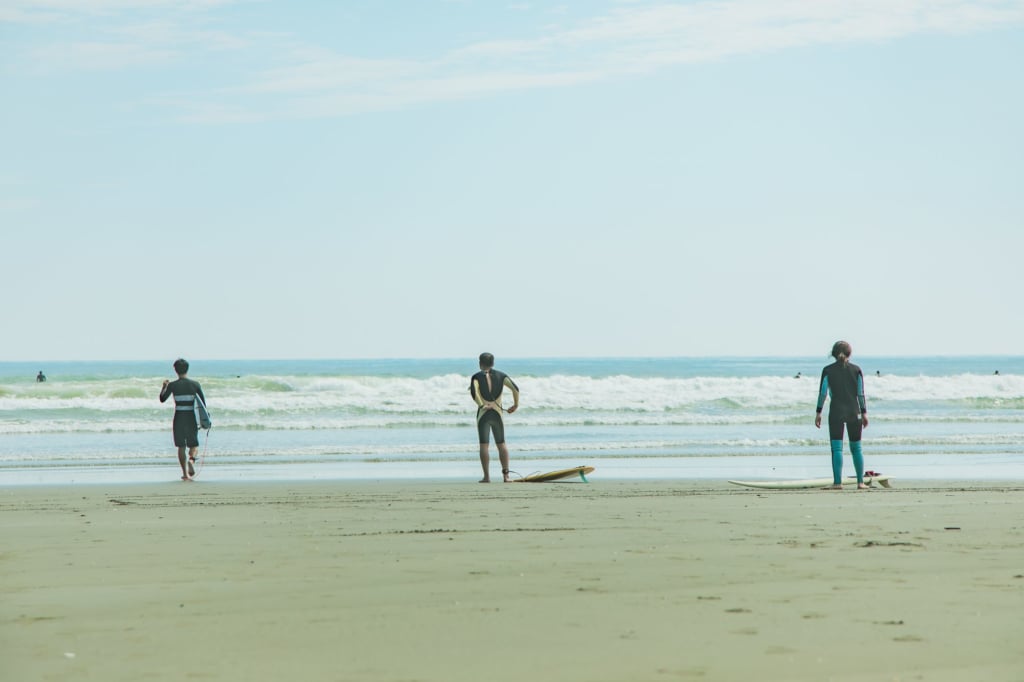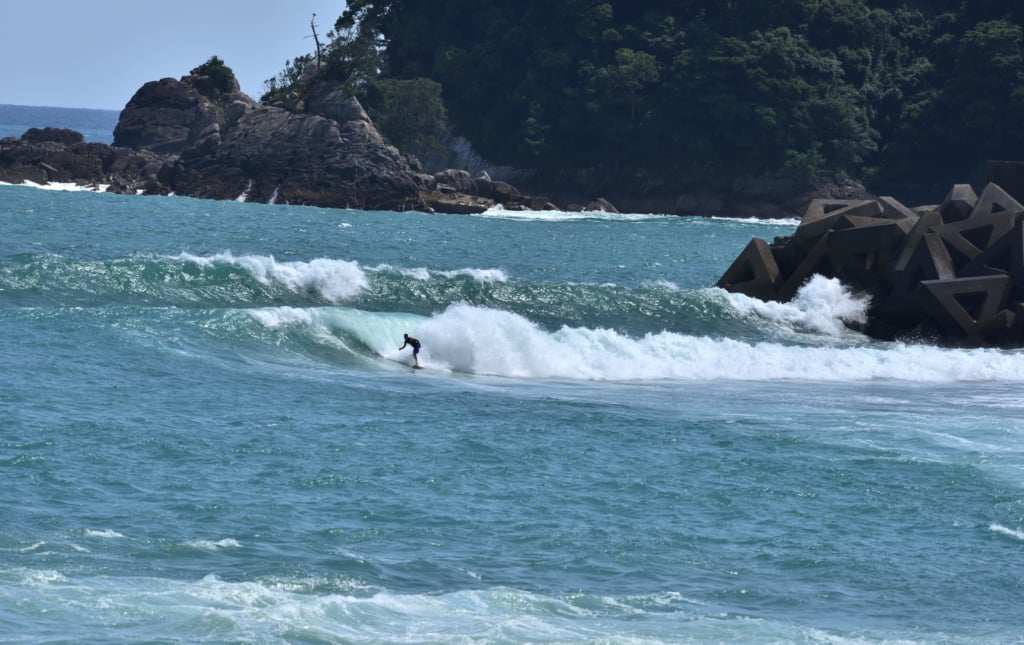Shikoku, a Lesser-Known Surfing Spot
With its rivers that flow out into the sea, this island sees world-class waves form from June to November every year.

© JNTO
In the collective imagination, the USA and Australia are the best surfing destinations in the world. However, Japan has what it takes to rival them. One of the country’s most rural islands, Shikoku, situated between the Seto Inland Sea and the Pacific Ocean, brings together all the qualities required to offer an incomparable surfing experience. Hills covered in dense vegetation that falls into the ocean, warm, crystalline water (with an average temperature of 23°C), expansive sandy beaches that run alongside the road… This wild haven seems far removed from the hustle and bustle of Tokyo.
During the typhoon season, from June until November, world-class rivermouth waves form, delighting enthusiasts of all levels of experience. This is due to the presence of numerous rivers that are fed by heavy rainfall. When these waterways flow out into the sea, they form sandbanks against which the swells (undulating motions on the surface of the water) created by the tropical cyclone break to form waves. Thus, there are at least twenty swells each season. They are unpredictable, lasting hours or several days.
Kaifu, the ‘Japanese Pipeline’
At the eastern tip of Shikoku Island lies Tokushima prefecture. Considered by many to be the unmissable surfing spot in Japan, this mountainous region with numerous beach breaks (a beach where the waves break on a sandy seabed) which are magnets for swells. In addition, at the mouth of the Kaifu River is where the wave that goes by the same name is found, known for being the best in the country.
It is nicknamed the ‘Japanese Pipeline’ by the locals, in reference to the famous ‘Banzai Pipeline’ in Hawaii, a place that’s as dangerous as it is sought-after. However, rights of access to the wave in Japan are reserved for experienced surfers. Despite its exceptional quality during the typhoon period, the conditions are hazardous. Indeed, with the lack of depth and the current created by the river, less experienced surfers risk getting into difficulties. Furthermore, according to those familiar with it, the Kaifu wave is described as temperamental. This natural phenomenon was filmed by surfer Yoav Naccache for Streamer.
More information can be found on the Japan National Tourist Organisation’s website.

© JNTO
TRENDING
-
A House from the Taisho Era Reveals Its Secrets
While visiting an abandoned building, Hamish Campbell discovered photographs the owner had taken of the place in the 1920s.

-
The Taboo-Breaking Erotica of Toshio Saeki
The master of the 1970s Japanese avant-garde reimagined his most iconic artworks for a limited box set with silkscreen artist Fumie Taniyama.

-
With Meisa Fujishiro, Tokyo's Nudes Stand Tall
In the series 'Sketches of Tokyo', the photographer revisits the genre by bringing it face to face with the capital's architecture.

-
Masahisa Fukase's Family Portraits
In his series ‘Family’, the photographer compiles surprising photos in which he questions death, the inescapable.

-
Hajime Sorayama's Futuristic Eroticism
The illustrator is the pioneer for a form of hyperrealism that combines sensuality and technology and depicts sexualised robots.





